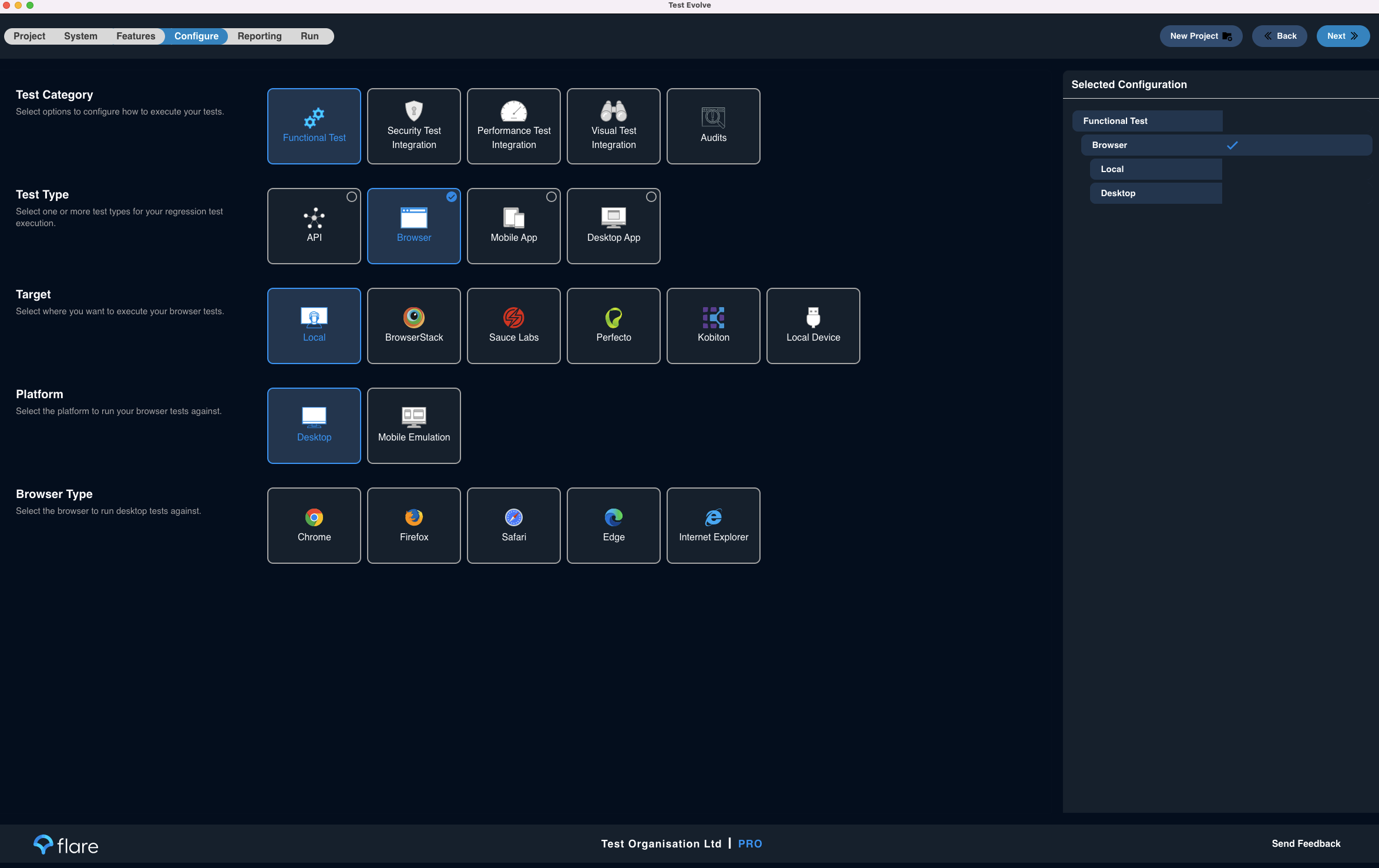
Cross Browser Testing
Driving Cross Browser Test Automation with Cucumber and Selenium Webdriver
Test Evolve Spark supports the testing of your web apps against the most popular browsers in use today.
Support for JavaScript, TypeScript and Ruby.
Run tests locally or in the cloud.
What’s Cross Browser testing and why is it so important?
At the end of 2022, w3schools.com tells us that almost 80% of users browsing the web on a desktop machine are using Google Chrome. That’s nearly 10 times as much as its nearest competitor, Microsoft Edge, at around 8% of market share. Firefox and Safari then take 5% and 4% respectively.
We also come to understand that the majority of users are on a Windows 10 machine (67%), followed by Mac users at almost 10%, Linux users at 4% and then Windows 7 users at just under 3%.
If we focus solely on Chrome usage, we learn that approximately 70% of all users are on a version of Chrome at least 2 versions behind the latest release. Only 3% of users are on the latest (or latest -1) versions giving a clear view that only a minority of users allow their machines to automatically update their browsers.
With regards to cross browser testing tools, Testers and Development teams must test their web applications against multiple browsers and multiple browser versions to ensure basic functional compatibility and as we can see from the statistics mentioned, multiple operating systems also need to be taken into account to ensure a good degree of test coverage, representative of a business’ user base.
Write your tests once and execute against multiple browsers, locally or in the cloud
Cross browser testing online is critical to successful web app development and assists in demonstrating that your web application is optimised for the maximum number of users, regardless of their browser of choice.
Differing browsers display content differently due to the variety of rendering engines that they use. Any business and product owner will simply expect that their website offers a completely consistent experience to the business’ users, irrespective of browser used.
Competition is fierce and if your competitors offer a more holistic experience on your users’ preferred browser, there’s a good chance your users may take their business elsewhere. People’s technology expectations are high and their tolerance is low for poor user experience.
With either Ruby, JavaScript or TypeScript, the Test Evolve Spark cross browser solution allows you to write and execute your tests against browsers installed locally on your machine or in the cloud via our integrations to other leading solution providers in the cross browser testing arena.
Target any given browser, browser version and operating system via our ready-to-go integrations to leading cross browser cloud vendors
Another important reason why cross-browser testing is required is that different browsers have varying levels of support for a range of web technologies and standards. For example, some browsers or browser versions may not support newer web technologies like HTML5 and CSS3. Others may have compatibility issues with older technologies like Flash. Cross browser testing assists you in identifying and fixing these cross browser challenges so your website works correctly on all browsers.
Setting up and maintaining a multi operating system, multi browser, multi browser version testing lab can be prohibitively expensive though and it is more popular than ever to simply make use of a plug and play cloud cross browser solution.
Test Evolve offers desktop and mobile browser cloud testing via our integrations to Browserstack, Sauce Labs, Kobiton and Perfecto Mobile. Simply add your subscription API key and instantly execute your tests against any desired browser and os combination you need to.
Got a customer with a specific website issue on their particular set-up? This is invaluable for quickly replicating and troubleshooting edge case browser incompatibility issues.



